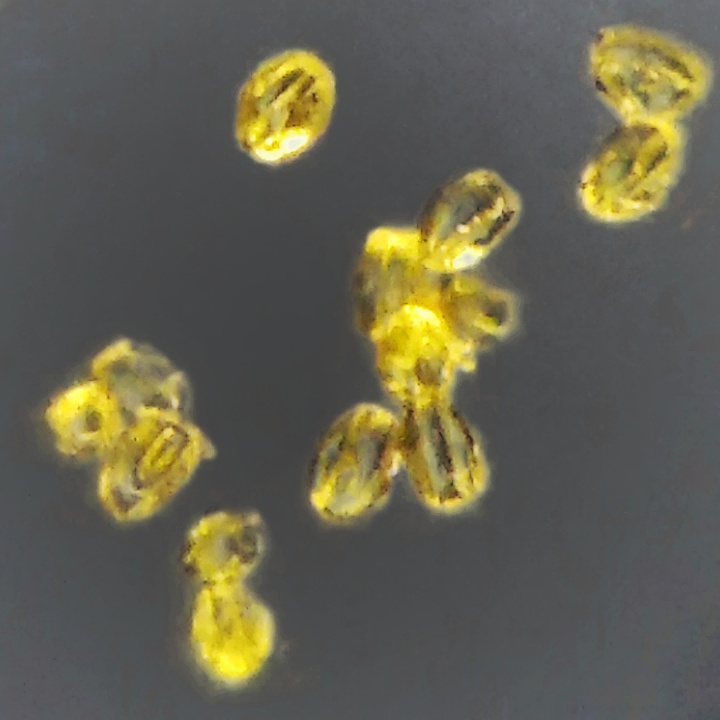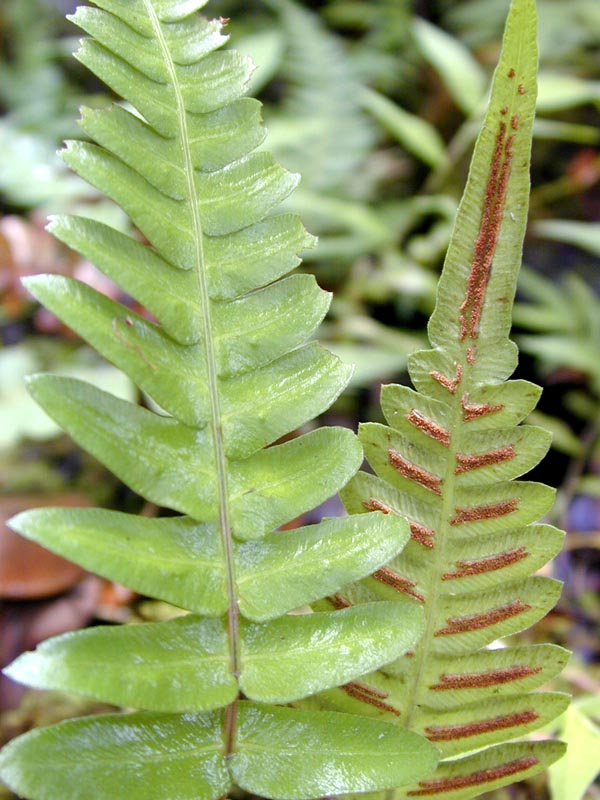|
Neem
''Azadirachta indica'', commonly known as neem, nimtree or Indian lilac, is a tree in the mahogany family Meliaceae. It is one of two species in the genus '' Azadirachta'', and is native to the Indian subcontinent and most of the countries in Africa. It is typically grown in tropical and semi-tropical regions. Neem trees also grow on islands in southern Iran. Its fruits and seeds are the source of neem oil. Description Neem is a fast-growing tree that can reach a height of , and rarely . It is deciduous, shedding many of its leaves during the dry winter months. The branches are wide and spreading. The fairly dense crown is roundish and may reach a diameter of . The neem tree is similar in appearance to its relative, the chinaberry ('' Melia azedarach''). The opposite, pinnate leaves are long, with 20 to 30 medium to dark green leaflets about long. The terminal leaflet often is missing. The petioles are short. White and fragrant flowers are arranged in more-or-less drooping ... [...More Info...] [...Related Items...] OR: [Wikipedia] [Google] [Baidu] |
Neem Oil
Neem oil, also known as margosa oil, is a vegetable oil pressed from the fruits and seeds of the neem ('' Azadirachta indica''), a tree which is indigenous to the Indian subcontinent and has been introduced to many other areas in the tropics. It is the most important of the commercially available products of neem and is used for organic farming and medicines. Composition Azadirachtin is the most well known and studied triterpenoid in neem oil. Nimbin is another triterpenoid which has been credited with some of neem oil's properties as an antiseptic, antifungal, antipyretic and antihistamine. Uses Ayurveda Neem oil has a history of use in Ayurveda folk medicine. There is limited evidence for its use in treating acute skin toxicity in head and neck cancer chemotherapy involving cisplatin. Toxicity The ingestion of neem oil is potentially toxic and can cause metabolic acidosis, seizures, kidney failure, encephalopathy and severe brain ischemia in infants and young child ... [...More Info...] [...Related Items...] OR: [Wikipedia] [Google] [Baidu] |
Azadirachta
''Azadirachta'' is a genus of two species of trees in the family Meliaceae. Numerous species have been proposed for the genus but only two are currently recognized, '' Azadirachta excelsa'' and the economically important tree ''Azadirachta indica'', the Neem tree, from which neem oil is extracted. Both species are native to the Indomalaysian region, and ''A. indica'' is also widely cultivated and naturalized outside its native range. In traditional medicine in India, the resin from the trees have been attributed with medical benefits. A component in the resin is an effective insecticide; see azadirachtin. Another component is an effective anti-fungal; see ''Azadirachta indica''. These species should not be confused with ''Melia azedarach ''Melia azedarach'', commonly known as the chinaberry tree, pride of India, bead-tree, Cape lilac, syringa berrytree, Persian lilac, Indian lilac, or white cedar, is a species of deciduous tree in the mahogany family, Meliaceae, that is n ... [...More Info...] [...Related Items...] OR: [Wikipedia] [Google] [Baidu] |
Meliaceae
Meliaceae, the mahogany family, is a flowering plant family of mostly trees and shrubs (and a few herbaceous plants, mangroves) in the order Sapindales. They are characterised by alternate, usually pinnate leaves without stipules, and by syncarpous, apparently bisexual (but actually mostly cryptically unisexual) flowers borne in panicles, cymes, spikes, or clusters. Most species are evergreen, but some are deciduous, either in the dry season or in winter. The family includes about 53 genera and about 600 known species, with a pantropical distribution; one genus ('' Toona'') extends north into temperate China and south into southeast Australia, another (''Synoum'') into southeast Australia, and another (''Melia'') nearly as far north. They most commonly grow as understory trees in rainforests, but are also found in mangroves and arid regions. The fossil record of the family extends back into the Late Cretaceous. Uses Various species are used for vegetable oil, soap-making, ... [...More Info...] [...Related Items...] OR: [Wikipedia] [Google] [Baidu] |
Pinnation
Pinnation (also called pennation) is the arrangement of feather-like or multi-divided features arising from both sides of a common axis. Pinnation occurs in biological morphology, in crystals, such as some forms of ice or metal crystals, and in patterns of erosion or stream beds. The term derives from the Latin word ''pinna'' meaning "feather", "wing", or " fin". A similar concept is "pectination," which is a comb-like arrangement of parts (arising from one side of an axis only). Pinnation is commonly referred to in contrast to "palmation," in which the parts or structures radiate out from a common point. The terms "pinnation" and "pennation" are cognate, and although they are sometimes used distinctly, there is no consistent difference in the meaning or usage of the two words.Jackson, Benjamin, Daydon; A Glossary of Botanic Terms with their Derivation and Accent; Published by Gerald Duckworth & Co. London, 4th ed 1928 Plants Botanically, pinnation is an arrangement of ... [...More Info...] [...Related Items...] OR: [Wikipedia] [Google] [Baidu] |
Fruit
In botany, a fruit is the seed-bearing structure in flowering plants that is formed from the ovary after flowering. Fruits are the means by which flowering plants (also known as angiosperms) disseminate their seeds. Edible fruits in particular have long propagated using the movements of humans and animals in a symbiotic relationship that is the means for seed dispersal for the one group and nutrition for the other; in fact, humans and many animals have become dependent on fruits as a source of food. Consequently, fruits account for a substantial fraction of the world's agricultural output, and some (such as the apple and the pomegranate) have acquired extensive cultural and symbolic meanings. In common language usage, "fruit" normally means the seed-associated fleshy structures (or produce) of plants that typically are sweet or sour and edible in the raw state, such as apples, bananas, grapes, lemons, oranges, and strawberries. In botanical usage, the term "fruit" als ... [...More Info...] [...Related Items...] OR: [Wikipedia] [Google] [Baidu] |
Glossary Of Botanical Terms
This glossary of botanical terms is a list of definitions of terms and concepts relevant to botany and plants in general. Terms of plant morphology are included here as well as at the more specific Glossary of plant morphology and Glossary of leaf morphology. For other related terms, see Glossary of phytopathology, Glossary of lichen terms, and List of Latin and Greek words commonly used in systematic names. A B ... [...More Info...] [...Related Items...] OR: [Wikipedia] [Google] [Baidu] |
Drupe
In botany, a drupe (or stone fruit) is an indehiscent fruit in which an outer fleshy part ( exocarp, or skin, and mesocarp, or flesh) surrounds a single shell (the ''pit'', ''stone'', or '' pyrena'') of hardened endocarp with a seed (''kernel'') inside. These fruits usually develop from a single carpel, and mostly from flowers with superior ovaries (polypyrenous drupes are exceptions). The definitive characteristic of a drupe is that the hard, lignified stone is derived from the ovary wall of the flower. In an aggregate fruit, which is composed of small, individual drupes (such as a raspberry), each individual is termed a drupelet, and may together form an aggregate fruit. Such fruits are often termed '' berries'', although botanists use a different definition of ''berry''. Other fleshy fruits may have a stony enclosure that comes from the seed coat surrounding the seed, but such fruits are not drupes. Flowering plants that produce drupes include coffee, jujube, ma ... [...More Info...] [...Related Items...] OR: [Wikipedia] [Google] [Baidu] |
Seed
A seed is an embryonic plant enclosed in a protective outer covering, along with a food reserve. The formation of the seed is a part of the process of reproduction in seed plants, the spermatophytes, including the gymnosperm and angiosperm plants. Seeds are the product of the ripened ovule, after the embryo sac is fertilized by sperm from pollen, forming a zygote. The embryo within a seed develops from the zygote, and grows within the mother plant to a certain size before growth is halted. The seed coat arises from the integuments of the ovule. Seeds have been an important development in the reproduction and success of vegetable gymnosperm and angiosperm plants, relative to more primitive plants such as ferns, mosses and liverworts, which do not have seeds and use water-dependent means to propagate themselves. Seed plants now dominate biological niches on land, from forests to grasslands both in hot and cold climates. The term "seed" also has a general meaning t ... [...More Info...] [...Related Items...] OR: [Wikipedia] [Google] [Baidu] |
Adrien-Henri De Jussieu
Adrien-Henri de Jussieu (23 December 1797 – 29 June 1853) was a French botanist. Born in Paris as the son of botanist Antoine Laurent de Jussieu, he received the degree of Doctor of Medicine in 1824 with a treatise of the plant family Euphorbiaceae. When his father retired in 1826, he succeeded him at the Jardin des Plantes; in 1845 he became professor of organography of plants. He was also president of the French Academy of Sciences. De Jussieu was elected a Foreign Honorary Member of the American Academy of Arts and Sciences in 1850. His main publications were the ''Cours élémentaire de botanique'' (Paris) and the ''Géographie botanique'' (Paris, 1846), as well as several monographs, most notably the one on the family Malpighiaceae. In botanical references he is usually abbreviated as Adr. Juss., also sometimes as A. Juss., as his father already has the abbreviation Juss. The asteroid 9470 Jussieu was named in honor of the de Jussieu family. In 1825, botanist Gaudi ... [...More Info...] [...Related Items...] OR: [Wikipedia] [Google] [Baidu] |
Hindustani Language
Hindustani (; Devanagari: , * * * * ; Perso-Arabic: , , ) is the ''lingua franca'' of Northern and Central India and Pakistan. Hindustani is a pluricentric language with two standard registers, known as Hindi and Urdu. Thus, the language is sometimes called Hindi–Urdu. Despite these standard registers, colloquial speech in Hindustani often exists on a spectrum between these standards. Ancestors of the language were known as ''Hindui'', ''Hindavi'', ''Zabān-e Hind'' (), ''Zabān-e Hindustan'' (), ''Hindustan ki boli'' (), Rekhta, and Hindi. Its regional dialects became known as ''Zabān-e Dakhani'' in southern India, ''Zabān-e Gujari'' () in Gujarat, and as ''Zabān-e Dehlavi'' or Urdu around Delhi. It is an Indo-Aryan language, deriving its base primarily from the Western Hindi dialect of Delhi, also known as Khariboli. Hindustani is a pluricentric language, best characterised as a continuum between two standardised registers: Modern Standard Hindi an ... [...More Info...] [...Related Items...] OR: [Wikipedia] [Google] [Baidu] |
Inflorescence
An inflorescence is a group or cluster of flowers arranged on a stem that is composed of a main branch or a complicated arrangement of branches. Morphologically, it is the modified part of the shoot of seed plants where flowers are formed on the axis of a plant. The modifications can involve the length and the nature of the internodes and the phyllotaxis, as well as variations in the proportions, compressions, swellings, adnations, connations and reduction of main and secondary axes. One can also define an inflorescence as the reproductive portion of a plant that bears a cluster of flowers in a specific pattern. The stem holding the whole inflorescence is called a peduncle. The major axis (incorrectly referred to as the main stem) above the peduncle bearing the flowers or secondary branches is called the rachis. The stalk of each flower in the inflorescence is called a pedicel. A flower that is not part of an inflorescence is called a solitary flower and its stalk ... [...More Info...] [...Related Items...] OR: [Wikipedia] [Google] [Baidu] |




